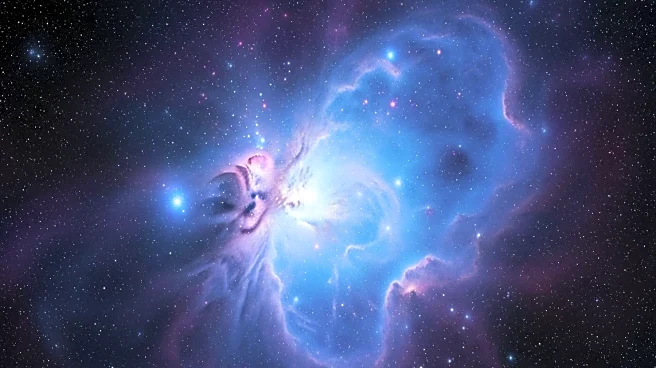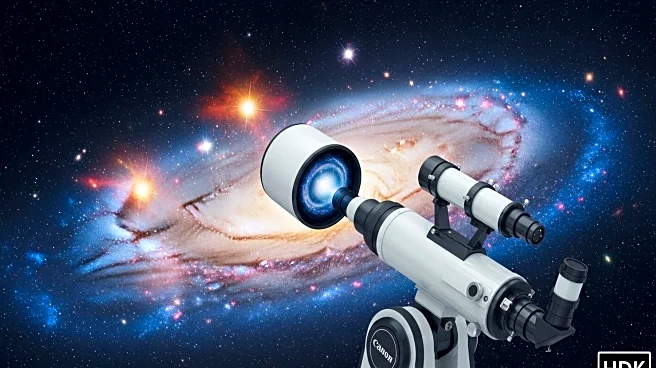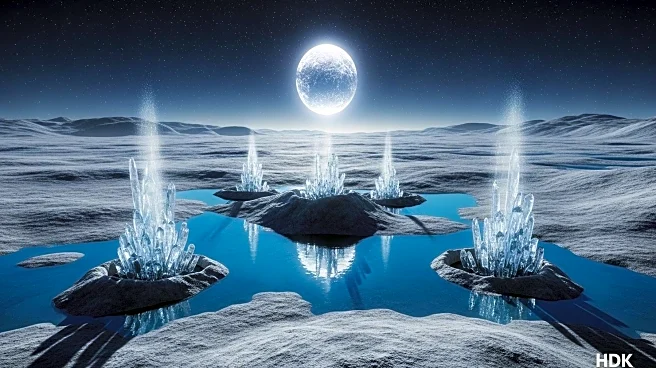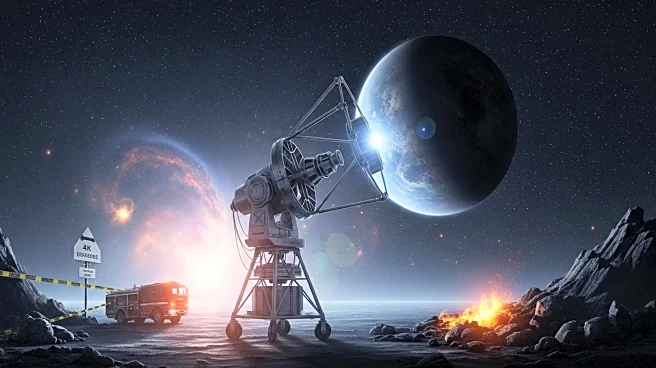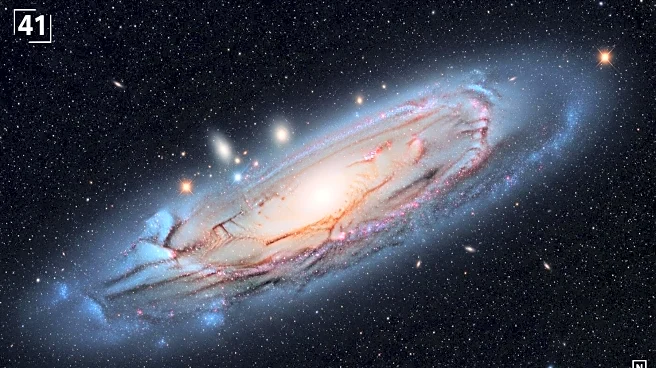What's Happening?
A significant discovery has been made by the European Space Agency's Gaia space telescope, which has identified a massive 'wave' rippling through the Milky Way galaxy. This wave is influencing the movement of billions of stars, affecting regions between 30,000 and 65,000 light-years from the galaxy's center. The Gaia telescope, which has been mapping star positions and movements with high precision, revealed this phenomenon before its retirement. The cause of this wave remains uncertain, with hypotheses suggesting a past collision with a smaller, dwarf galaxy. The findings were published in the journal Astronomy & Astrophysics, highlighting the wave's impact on young giant stars and Cepheids, which are stars with predictable brightness variations. The wave's influence extends to the gas in the galaxy's disk, potentially affecting star formation processes.
Why It's Important?
The discovery of this galactic wave is crucial for understanding the dynamics of the Milky Way and the forces shaping its structure. It provides insights into the movement patterns of stars and the potential interactions between galaxies. This knowledge could lead to a better understanding of galactic evolution and the role of external forces in shaping star systems. The wave's impact on star formation and gas movement within the galaxy could have significant implications for astrophysics, potentially altering existing models of galactic behavior. Researchers and astronomers stand to gain valuable data that could refine theories about the Milky Way's past interactions and future developments.
What's Next?
Further research is needed to determine the origins and full implications of the galactic wave. Scientists aim to explore whether this wave is related to other known phenomena, such as the Radcliffe Wave, a smaller ripple in the Milky Way. Continued analysis of Gaia's data and additional observations could provide more clarity on the wave's effects and its potential connections to other galactic structures. The scientific community is likely to focus on understanding the wave's impact on star formation and the movement of gas within the galaxy, which could lead to new discoveries about the Milky Way's history and evolution.
Beyond the Headlines
The discovery of the galactic wave raises questions about the interconnectedness of cosmic events and their influence on galactic structures. It highlights the complexity of the universe and the potential for unseen forces to shape the cosmos. This finding could prompt discussions on the ethical considerations of space exploration and the importance of international collaboration in astronomical research. The wave's impact on star formation may also lead to cultural reflections on humanity's place in the universe and the ongoing quest to understand our cosmic environment.




